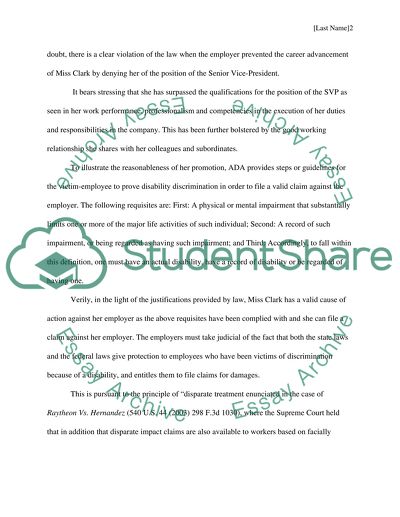Cite this document
(“Violations under American Disability Act Case Study”, n.d.)
Retrieved from https://studentshare.org/geography/1419126-case-law
Retrieved from https://studentshare.org/geography/1419126-case-law
(Violations under American Disability Act Case Study)
https://studentshare.org/geography/1419126-case-law.
https://studentshare.org/geography/1419126-case-law.
“Violations under American Disability Act Case Study”, n.d. https://studentshare.org/geography/1419126-case-law.


